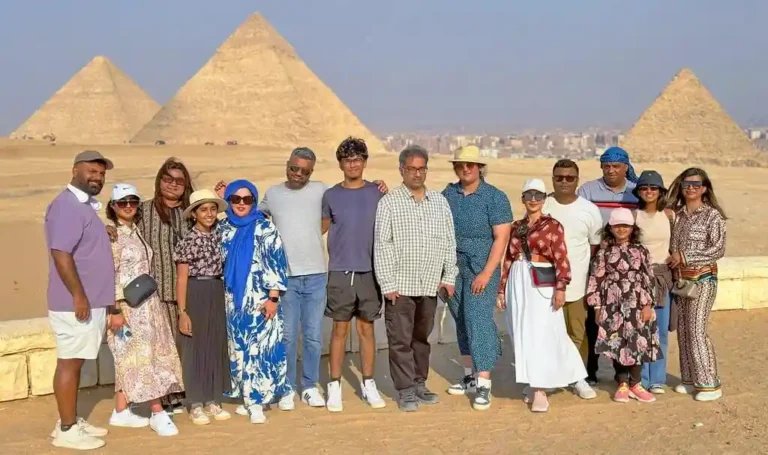The Unification Battle by King Narmer
The unification battle of King Narmer is shown on his Palette from ancient Egypt’s Predynastic Period. This cosmetic palette is a stone slab with a central hollow used for mixing makeup. However, palettes also took on a commemorative role and were made from valuable materials. The Narmer Palette, made of schist, is a triangular slab measuring 64 x 42 cm.
Archaeologists found the palette in 1898 among the ruins of the Temple of Horus at Hierakonpolis, near Edfu. It dates to around 3000 BC and is now housed in the Egyptian Museum in Cairo. Narmer, also known as Menes, was the first monarch recorded on the Royal List of Abydos. This list includes the names of almost all pharaohs of the Nile Valley. Historians consider him the founder of the First Dynasty and a forefather of Egyptian government.
The unification battle of King Narmer, around c.3100 BCE, marked the beginning of the early dynastic period. This battle led to the creation of the first royal dynasty in Egypt, with Narmer emerging as the first pharaoh. His name, Menes, means “He Who Endures,” signifying his enduring legacy in Egyptian history. Together, these elements illustrate not only the foundational role Narmer played in Egyptian governance but also the pivotal event that initiated this significant epoch in ancient Egypt.
The iconographic study of this palette shows the goal of glorifying Narmer’s persona and enables us to comprehend his reign’s political importance. The piece is etched on both sides with reliefs and depicts the effort to unite the country’s north and south. The first unified capital of Egypt was named Memphis.
Narmer Palette at The Egyptian Antiquities Museum

The back of the Narmer Palette has three distinct levels. The top level displays the king’s name. It sits inside a box supported by two cow heads. These heads belong to the goddess Hathor. They show one of the oldest depictions of a god with human features.
The central section shows a huge image of Narmer. He wears the white crown of Upper Egypt, a fake beard, and a short skirt with an oxtail. The King holds a mace in his right hand and raises it to strike a defeated enemy, whose hair he grips with his left hand.
This image shows the king’s conquest of the country’s north. It established an iconography used for centuries to show pharaohs’ military might. A sidekick, a “sandal-bearer,” accompanies Narmer. His shaven head and a jug in his hand suggest he is likely a priest.
On the opposite side, the god Horus appears as a hawk. He sits on six papyrus stalks. These stalks represent the Nile Delta. Horus subdues an enemy by a hook through his nose. This symbolizes Horus controlling the life of those who oppose him.
Religious Symbols and Divine Power
The ankh and the Djed pillar were common religious symbols during Narmer’s reign. The ankh symbolizes life and immortality. Gods and goddesses often hold it to show their power to give life. The Djed pillar represents stability and strength. It was linked to the god Osiris and symbolized his backbone. These symbols were key to ancient Egyptian identity.
Horus’ involvement shows the pharaoh as a living god. Divine forces guided his actions. Narmer’s name was also inscribed with symbols similar to Horus’. The image, therefore, represents a conquering pharaoh. He subdued the Delta area and unified the entire Nile Valley for the first time. He brought order out of chaos. On the bottom level, two terrified enemies flee Narmer’s fury.
The Other Side of the Palette
The other side of the palette has four scenes. The top scene has an inscription between two cow heads, just like the reverse. The next section shows Narmer wearing the red crown of Lower Egypt. He carries symbols of authority, including a mace. His sandal-bearer stands behind him, holding a purifying vessel.
In front of the king stand his vizier and four standard-bearers. Each standard represents one of the country’s prefectures. To the right, ten ritually beheaded victims lie with their heads between their knees. This shows Narmer’s victory over his enemies. A falcon and a symbolic boat appear above them. This boat may have been for pilgrimages to sacred towns in the Western Delta.
The third level shows two magnificent quadrupeds with long, intertwined necks. Two servants hold them with ropes. This likely symbolizes the pharaoh’s power. It unified Egypt’s north and south and brought peace. On the bottom, Narmer is a powerful bull. He tears down fortress walls. One of his enemies rests under his feet.
Historians believe this image shows the “white triumph,” the final stage of Egypt’s unification. Historians also credit King Menes with creating government structures still used today.0
King Narmer’s Economic Impact
After the unification battle of King Narmer, he started to pay great attention to Egypt’s economy. His strategic initiatives laid the foundation for centuries of prosperity.
Enhancing the Economy
Narmer’s reign saw an expansion of trade networks. He established trade routes across North Africa and nearby regions. This allowed Egypt to import valuable goods and export surplus resources, which boosted the economy and encouraged cultural exchange.
Narmer also initiated major construction projects. These projects created jobs and developed vital infrastructure. Notably, he oversaw the construction of granaries and transport routes, which facilitated commerce and trade.
By unifying Upper and Lower Egypt, Narmer founded a centralized state. This improved administrative efficiency and resource distribution. This unification created a stable society, paving the way for future kingdoms.
Finally, Narmer strengthened Egypt’s military presence. A strong military safeguarded trade routes and protected national resources. This stability was crucial for sustained economic growth.
In summary, King Narmer’s economic enhancements were multifaceted. He combined strategic trade expansion, infrastructure development, effective governance, and military fortification. These efforts set Egypt on the path to becoming an ancient powerhouse.























